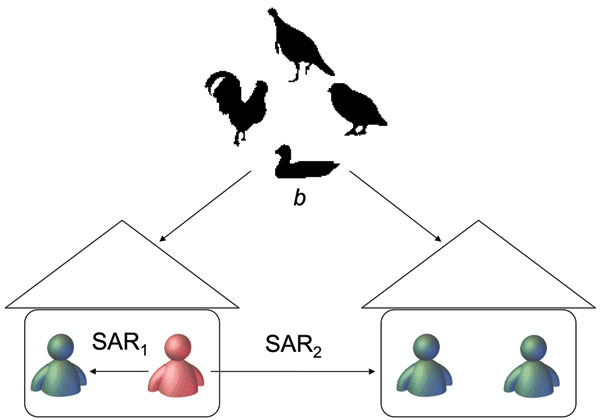Volume 13, Number 9—September 2007
Research
Detecting Human-to-Human Transmission of Avian Influenza A (H5N1)
Figure

Figure. Schematic of estimation method. An infectious person (in red) infects a susceptible person (in green) in the same household with probability of household secondary attack rate (SAR1) and infects a susceptible person in a different household with probability SAR2. The common infectious source (i.e., avian hosts) infects a susceptible person with probability b per day. The likelihood function is constructed from symptom-onset dates and exposure information to estimate the above parameters
Page created: July 01, 2010
Page updated: July 01, 2010
Page reviewed: July 01, 2010
The conclusions, findings, and opinions expressed by authors contributing to this journal do not necessarily reflect the official position of the U.S. Department of Health and Human Services, the Public Health Service, the Centers for Disease Control and Prevention, or the authors' affiliated institutions. Use of trade names is for identification only and does not imply endorsement by any of the groups named above.